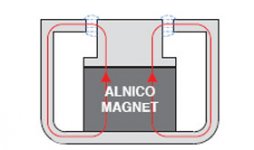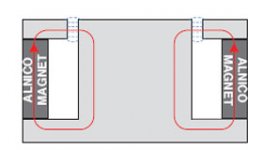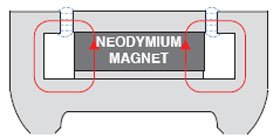The 0W40 was the one I had identified to be the best from 2001 to 2015 or so when I had sold that car. There was no testing beyond hard driving daily and a visual inspection of the oil. I understand that particular formulation was specified by BMW to use in a bunch of engines that they messed up the cylinder coatings in.
The one I use now, but don’t have the same strong conviction of it being superior, is the Mobil 1 5W40. It’s marketed towards trucks and diesels but the data sheet says gas engines too. So apparently(hopefully) there aren’t any additives that will damage my catalyst.
The one I use now, but don’t have the same strong conviction of it being superior, is the Mobil 1 5W40. It’s marketed towards trucks and diesels but the data sheet says gas engines too. So apparently(hopefully) there aren’t any additives that will damage my catalyst.
... If the Castrol Edge with the approval is available and less expensive, I'd just get that. It's just as good. Just make sure it's the version that's on the 229.51 or 229.52 list so you don't harm the particulate filter...
Castrol Edge is much more affordable over here at about 5 liters for CHF 50, or roughly 10 bucks a quart. Interestingly, the Haynes book mentions these, as an example of what to buy, but I think MB themselves use M1.
The 0W40 was the one I had identified to be the best from 2001 to 2015 or so when I had sold that car. There was no testing beyond hard driving daily and a visual inspection of the oil. I understand that particular formulation was specified by BMW to use in a bunch of engines that they messed up the cylinder coatings in.
The one I use now, but don’t have the same strong conviction of it being superior, is the Mobil 1 5W40. It’s marketed towards trucks and diesels but the data sheet says gas engines too. So apparently(hopefully) there aren’t any additives that will damage my catalyst.
Well, you really can't tell anything from visual inspection of oil or even subjective impressions... everyone swears their valvetrain is quieter when they switch oils, it's a meme at this point.
BMW also never used Mobil 1 as factory fill. As far back as the 90s it was Castrol, until 2014 when Shell became the supplier. The M52 and M60 engines had problems with Nikasil coating, but there is no oil that would help that. For the rod bearing issues they switched M3 (S54) owners to Castrol TWS Motorsport 10W-60, which may not have helped anyway, but did cost me $15 per quart.
I'm sure the 5W-40 is fine.
Howie knows better than I do, but I think you're fine unless you use some race oil or additive with a lot of extra ZDDP. I seem to recall either the zinc or phosphorous harms the catalyst over time.
At this point, unless you track your car, you don't need to spend too much time thinking about oil. If you buy a major brand oil in the right grade and don't forget to change it, that's going to work for 99% of engines and people. Anyway, now back to the regularly scheduled audio arguments 🙂.
Last edited:
Castrol Edge is much more affordable over here at about 5 liters for CHF 50, or roughly 10 bucks a quart. Interestingly, the Haynes book mentions these, as an example of what to buy, but I think MB themselves use M1.
Yeah, just about every manufacturer has a deal with someone. MB has used M1 in recent history, but the top tier brands are all making competitive products now.
Mobil 1 and competitors are mostly Group III base stock now, which is one reason why the price has come down. At some point in the early 2000s, they started calling mostly Group III oils "full synthetic". That used to be reserved for Group IV and Group V oils. The M1 0W-40 was the last one to be almost entirely Group IV, which I am sure contributes to its performance and why it was the factory fill for new Porsche 911s and the Nissan GT-R. That's just one factor, and I'm sure the new oils are at least as good on the whole.
Bentley, also.... 0/40W M1 synth -- the best for their car and customers.
-RNM
Last edited:
Btw, did you get the ppt's? Were they of any use? As I said, they were geared towards a target audience with significantly less expertise than you..
They were quite interesting. I was impressed with what you are getting from micro-stepping the motors. The noise in the plot looked like a variation on crossover; deadband in this case, with enough gain to have the system hunt when the gain goes through zero. Instinctively I would have multiple loops, tight ones around the motors to reduce the deadband and a large one with PID type tuning for the final positioning. However with my luck the system would go crazy when first powered up and self destruct.
I thought the PPT's did a good job of introducing the concepts and showing what to look for and where.
Looking for a USA bargain?
CTS-V 0-62mph in mid 3 seconds. 200mph+ top speed. >1G lat $
2017 Lambo Huracan LP580-2 spyder 0-62 = 3.4 sec $$$
Porsche 911 GT3 RS 0-62 = 3.2 sec $$$
etc
Only Ultra super mega hyper cars are just under 3.0 sec. $$$$$
https://www.topspeed.com/cars/car-n...is-the-camaro-zl1-for-gentlemen-ar177878.html
-RNM
CTS-V 0-62mph in mid 3 seconds. 200mph+ top speed. >1G lat $
2017 Lambo Huracan LP580-2 spyder 0-62 = 3.4 sec $$$
Porsche 911 GT3 RS 0-62 = 3.2 sec $$$
etc
Only Ultra super mega hyper cars are just under 3.0 sec. $$$$$
https://www.topspeed.com/cars/car-n...is-the-camaro-zl1-for-gentlemen-ar177878.html
-RNM
Last edited:
Thanks. Once some of the guys have presented at conferences, I'll be able to provide actual results of our work. That's why I had to cull my overall.They were quite interesting. I was impressed with what you are getting from micro-stepping the motors. The noise in the plot looked like a variation on crossover; deadband in this case, with enough gain to have the system hunt when the gain goes through zero. Instinctively I would have multiple loops, tight ones around the motors to reduce the deadband and a large one with PID type tuning for the final positioning. However with my luck the system would go crazy when first powered up and self destruct.
I thought the PPT's did a good job of introducing the concepts and showing what to look for and where.
Nonetheless, we have the multiton devices following errors below 50 nanometers, and static positioning under 5 nano using brushless 3 phase motors. Since we run the 3 phase in torque mode, I am using the output drive signals to diagnose the mechanical system. Already found some alignment issues and are working on those. It's fun using FFT's to see mechanical problems.
Jn
Last edited:
Yes.Has anyone re-magnetized their older speakers?
Alnico, or similar, which tend to lose the field over time.
It was on speakers of some guitar amps. It change the efficiency and the sound ;-), as well as the Thiele-Small parameters.
Some people pretends that Alnico magnets "sound better" than ferrite. Do they produce a magnetic field of an other nature or form than other magnets ?
or is-it just a question of the geometry of the magnet assembly because the volume changes ?
Last edited:
I mentioned this before without response... How about making a speaker or winding a VC in such a way that it acts as a linear variable differential transformer. It can then be used to measure the distance moved and correct itself with some circuitry
?
Linear variable differential transformer - Wikipedia
-RNM
?
Linear variable differential transformer - Wikipedia
-RNM
Last edited:
...Mobil 1 and competitors are mostly Group III base stock now, which is one reason why the price has come down. At some point in the early 2000s, they started calling mostly Group III oils "full synthetic". That used to be reserved for Group IV and Group V oils...
Yeah, that change in definition disgusted me as well... I wrote a rant about it which is the last two pages of this TechBrief:https://zddplus.com/wp-content/uploads/2017/05/TechBrief10-Oil-Base-Stocks.pdf
Cheers,
Howie
Well, you really can't tell anything from visual inspection of oil or even subjective impressions... everyone swears their valvetrain is quieter when they switch oils, it's a meme at this point.
BMW also never used Mobil 1 as factory fill. As far back as the 90s it was Castrol, until 2014 when Shell became the supplier. The M52 and M60 engines had problems with Nikasil coating, but there is no oil that would help that. For the rod bearing issues they switched M3 (S54) owners to Castrol TWS Motorsport 10W-60, which may not have helped anyway, but did cost me $15 per quart.
I'm sure the 5W-40 is fine.
Howie knows better than I do, but I think you're fine unless you use some race oil or additive with a lot of extra ZDDP. I seem to recall either the zinc or phosphorous harms the catalyst over time.
At this point, unless you track your car, you don't need to spend too much time thinking about oil. If you buy a major brand oil in the right grade and don't forget to change it, that's going to work for 99% of engines and people. Anyway, now back to the regularly scheduled audio arguments 🙂.
All excellent information Chris!
There are two cases where augmenting the factory ZDDP levels is not only warranted but advisable: Cars manufactured before 1996 when the API SJ standard was adopted, and as you stated, racing engines.
Cheers,
Howie
Looking for a USA bargain?
CTS-V 0-62mph in mid 3 seconds. 200mph+ top speed. >1G lat $...
I drove a friend's CTS-V and it was a magnificent vehicle, fast, quiet...great car.
Howie
Well maybe some people cannot discern a quality motor oil, but obviously I had!
Probably one of the least critical things in a street driven car, agreed, however when that car is driven to extremes, things then become more clear. The ability to maintain better compression over a period of time can be detected from the drivers seat.
People tend to forget that all the measurements and other analysis aids are more or less recent developments and fail miserably to rely on their senses. Analysts and visceral hobbies are kind of humorous, racing is a different story.
The car I would look to own if I still wanted to drive fast somewhere, not around here, would be the Lexus ISF. While not below 3 seconds to 60, it’s not bad at 3.5 or so. Fairly plain styling and blends in to traffic. The supercharged Cadillac lineup is pretty unreal, wicked fast!
Probably one of the least critical things in a street driven car, agreed, however when that car is driven to extremes, things then become more clear. The ability to maintain better compression over a period of time can be detected from the drivers seat.
People tend to forget that all the measurements and other analysis aids are more or less recent developments and fail miserably to rely on their senses. Analysts and visceral hobbies are kind of humorous, racing is a different story.
The car I would look to own if I still wanted to drive fast somewhere, not around here, would be the Lexus ISF. While not below 3 seconds to 60, it’s not bad at 3.5 or so. Fairly plain styling and blends in to traffic. The supercharged Cadillac lineup is pretty unreal, wicked fast!
There were a few forms of alnico magnet assemblies,Yes.
It was on speakers of some guitar amps. It change the efficiency and the sound ;-), as well as the Thiele-Small parameters.
Some people pretends that Alnico magnets "sound better" than ferrite. Do they produce a magnetic field of an other nature or form than other magnets ?
or is-it just a question of the geometry of the magnet assembly because the volume changes ?
as opposed to the standard ferrite ring magnet assembly which is almost always of this construction -

Alnicos were usually like this in formed flat sheet or formed 360* cup versions,

and sometimes like this ferrite like form.

Neodymium magnets have allowed return to alnico form factor.

So regarding the question, I reckon yes there are indeed differences according to the magnetic materials used in addition to any different behaviours caused by different constructions.
Here's a second opinion.
Dan.
Thanks for the illustrations, it explains a lot really.
Sadly I don’t own the 50+ year old Jensen 12” anymore.
Sadly I don’t own the 50+ year old Jensen 12” anymore.
...The ability to maintain better compression over a period of time can be detected from the drivers seat....
Indeed, the side forces on rings and potential frictional drag is extreme under full throttle. I can sense a difference between 3000 mile, partly broken oil and acceleration after changing that oil for fresh.
Base oil is a Newtonian fluid and it's viscosity decreases with an increase in temperature, a characteristic quantified as Viscosity Index (VI). Certain true synthetics have an inherently high VI and retain viscosity at high temps and flow at low temps better than mineral oils. All fully formulated PCEO contains polymeric VI improvers which modify this characteristic to help keep viscosity low at extreme cold and higher at extreme heat. In the 1970's and 80s, these long-chain polymers were, by comparison with today's, fragile and heat sensitive. As a result there was a big difference between new and used oil in terms of viscosity and film strength. Add to this the fuel washdown of carbureted engines, and you can see one of the major factors engines didn't last as long. Modern oils have by comparison very long-lived and stable VI improvers so this breakdown is far less than it used to be.
Personally I notice much less of a difference between new and used oil performance than I used to back then...but still hear the engine get quieter and run smoother when the new oil is in...maybe I ought to get back with the program and talk audio....
Howie
Indeed, the side forces on rings and potential frictional drag is extreme under full throttle. I can sense a difference between 3000 mile, partly broken oil and acceleration after changing that oil for fresh.
Base oil is a Newtonian fluid and it's viscosity decreases with an increase in temperature, a characteristic quantified as Viscosity Index (VI). Certain true synthetics have an inherently high VI and retain viscosity at high temps and flow at low temps better than mineral oils. All fully formulated PCEO contains polymeric VI improvers which modify this characteristic to help keep viscosity low at extreme cold and higher at extreme heat. In the 1970's and 80s, these long-chain polymers were, by comparison with today's, fragile and heat sensitive. As a result there was a big difference between new and used oil in terms of viscosity and film strength. Add to this the fuel washdown of carbureted engines, and you can see one of the major factors engines didn't last as long. Modern oils have by comparison very long-lived and stable VI improvers so this breakdown is far less than it used to be.
Personally I notice much less of a difference between new and used oil performance than I used to back then...but still hear the engine get quieter and run smoother when the new oil is in...maybe I ought to get back with the program and talk audio....
Howie
I notice the time it takes the engine to heat up enough to warm the passenger cabin in winter. Oil that is about to be changed about a mile, new Mobil 1 three miles. As my drive to work is 6 miles....
- Status
- Not open for further replies.
- Home
- Member Areas
- The Lounge
- John Curl's Blowtorch preamplifier part III